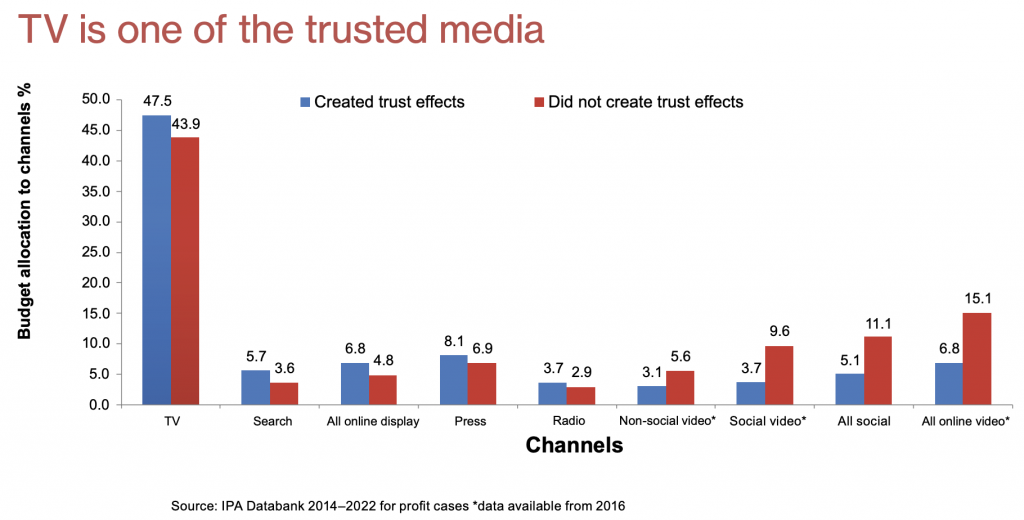The research paper “Why TV Still Matters for Effectiveness” by Peter Field is a compelling and data-driven study of the enduring role of television advertising in contemporary marketing. Despite the proliferation of digital media and predictions about the decline of television’s importance, Field’s research demonstrates that TV continues to deliver exceptional results on key metrics, such as brand awareness, emotional impact, and long-term profitability. Drawing on a decade of data from the IPA Effectiveness Databank and modern studies on attention and trust, the author argues that television remains an unparalleled platform for brand building and sustainable growth.
Here are the main insights that challenge common beliefs and offer a new perspective, which are worth considering when developing media strategies. The key points are supported by analyses that reveal the tangible benefits of television advertising.
Key takeaways include:
Television’s Dominance in Long-term Effectiveness: Visual data from the IPA Effectiveness Databank indicate that TV advertising remains the dominant driver of demand growth over the long term. Charts show that television’s share in effectiveness-driven campaign budgets is stable or even increasing, despite challenges from digital platforms.

Attention and Memory: Research by Amplified Intelligence shows that active attention lasting at least 2.5 seconds is crucial for building mental availability and brand growth. Television ads achieve longer periods of focused attention compared to most online ads, which often fail to meet this threshold.

High-Attention Media like Television Offer Greater Creative Potential: Television provides stable visual attention, unlike digital platforms where attention depletes quickly, making TV more effective for brand building. High-attention media create a better environment for the impact of creative solutions.

Emotional Impact: Data from the IPA Effectiveness Databank indicate that emotional advertising, where television excels, is significantly more effective than rational advertising. A chart illustrates the multiplicative effect on share-of-voice effectiveness for campaigns that employ emotional content.

There is a growing correlation between trust and profits, with television being highlighted as one of the most trusted media platforms. Comparisons indicate that campaigns using television typically generate higher trust and, consequently, greater profitability.
As shown in the chart below, the most effective campaigns are those where approximately 45% to 50% of the budgets are allocated to television. Investments in television are crucial for building premium brands that can afford to sell at higher prices, thereby helping companies achieve greater profitability.

As the presented material shows, television advertising, despite dynamic changes in the media landscape, still plays a key role in long-term brand building and profit growth, supported by appropriate media budget allocations. Numerous data-backed arguments highlight the high effectiveness of television in capturing attention, building emotional connections, and strengthening brand trust.